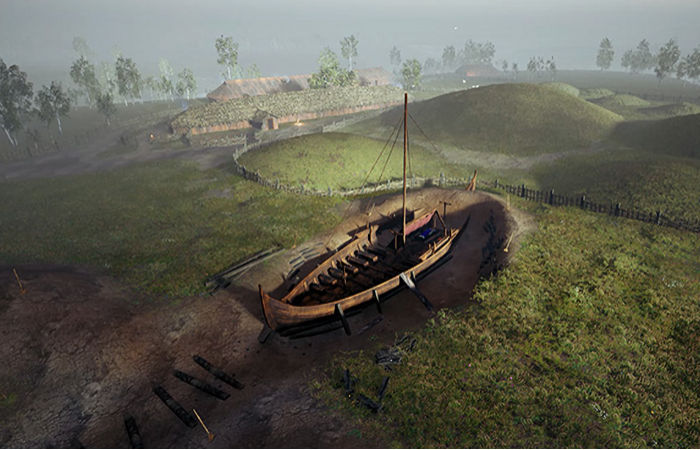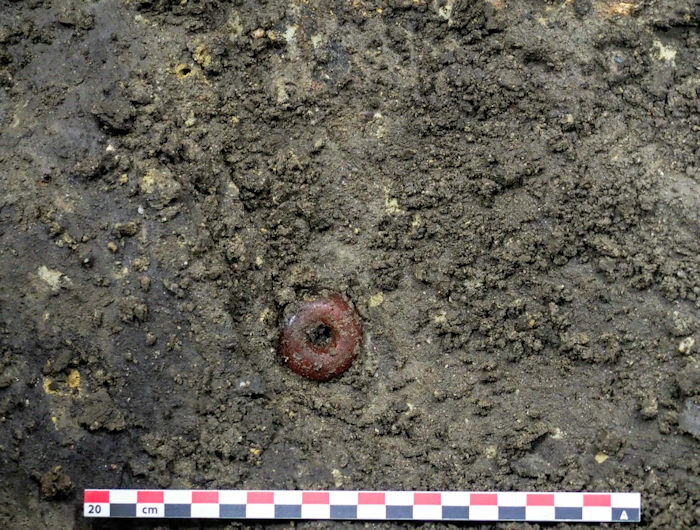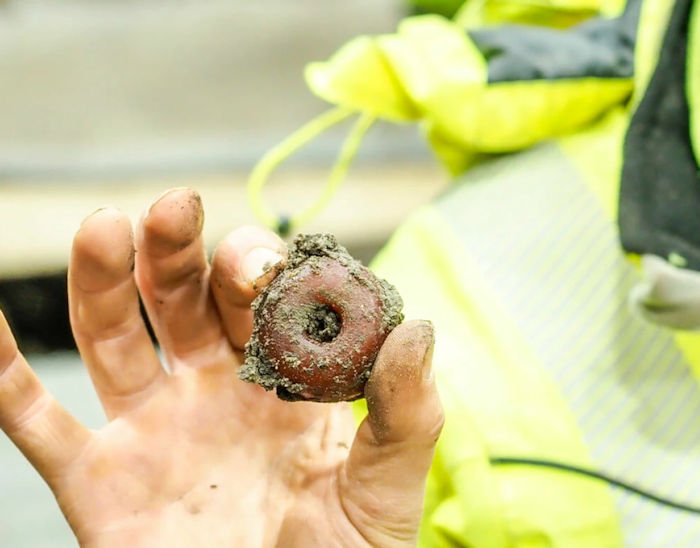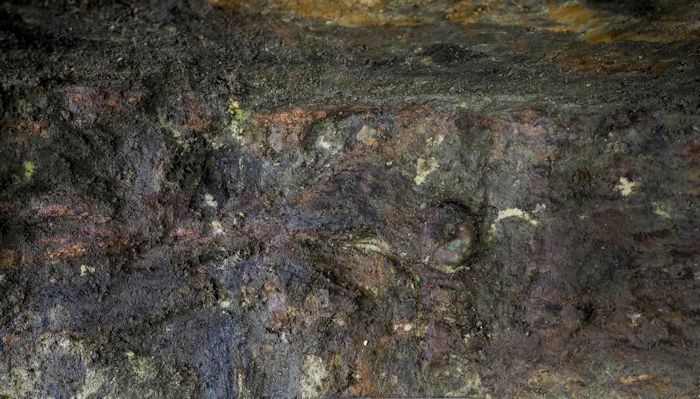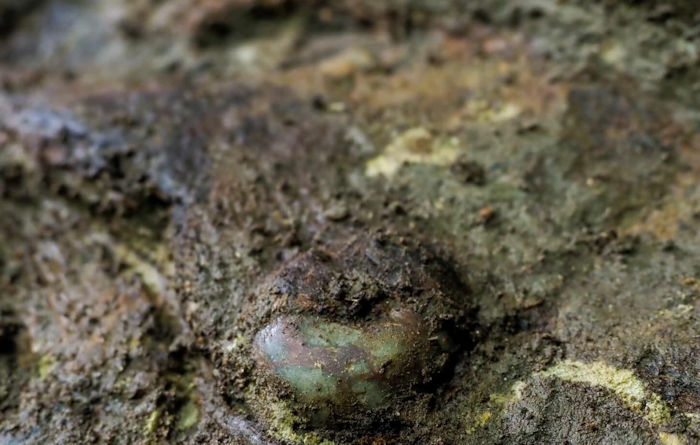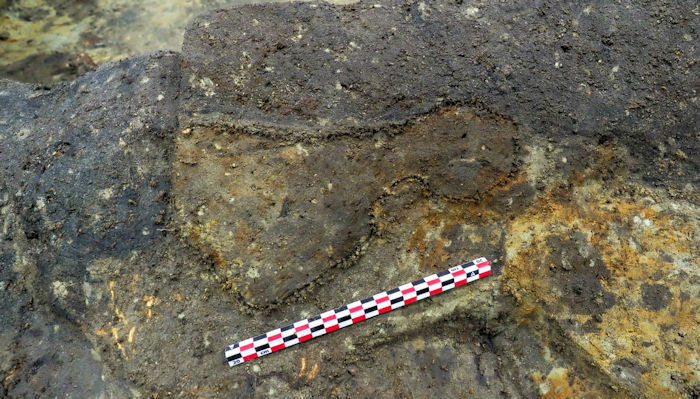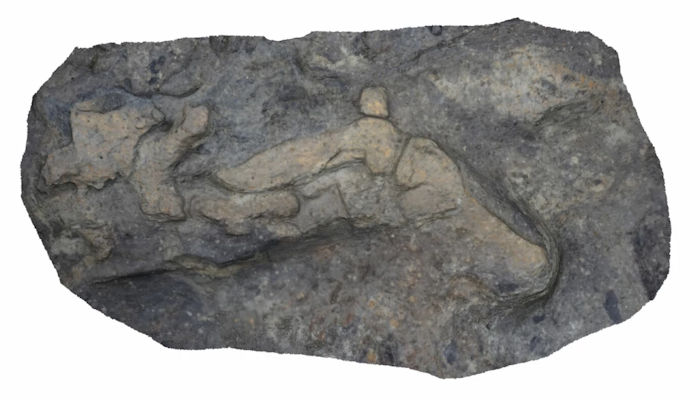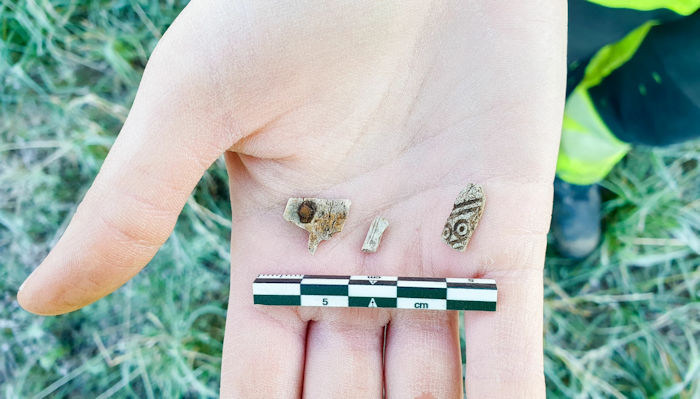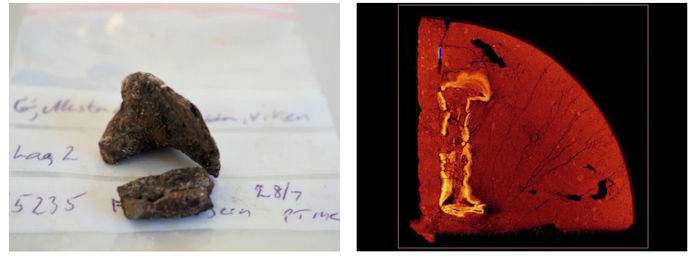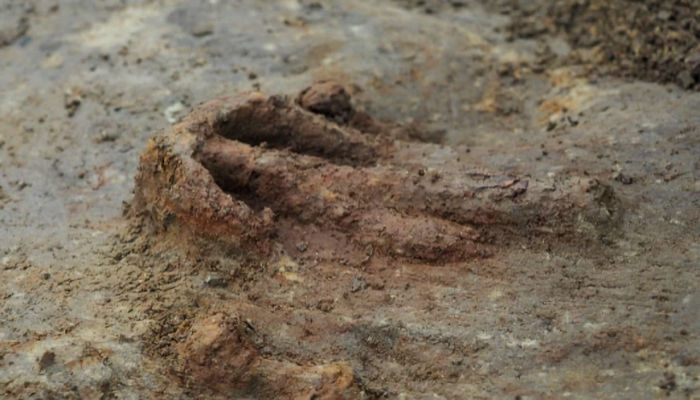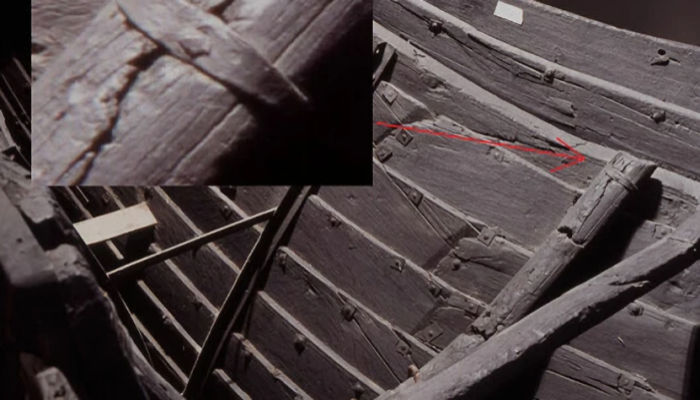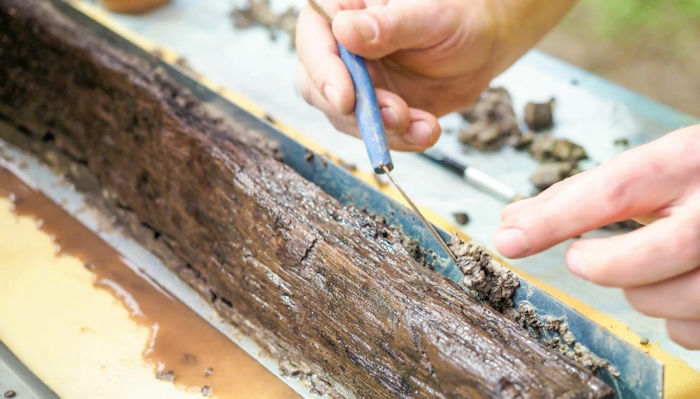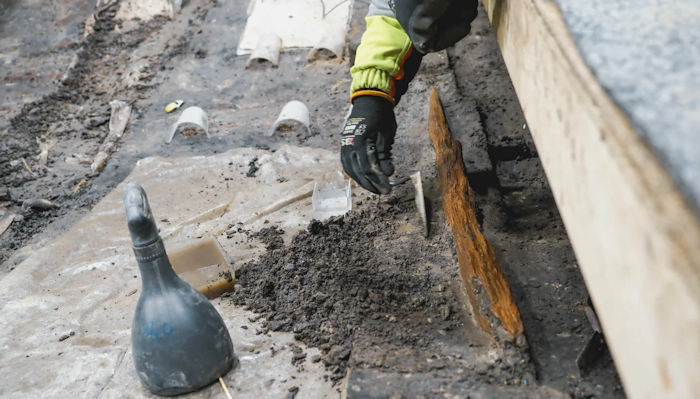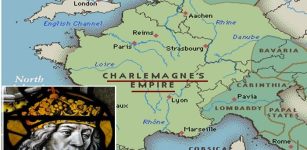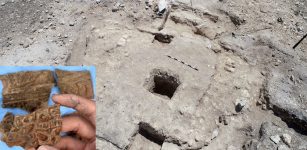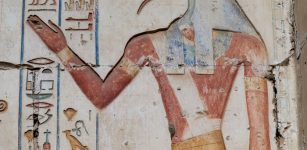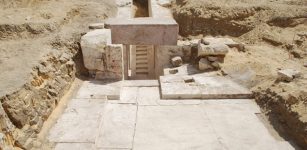Archaeologists Reveal 12 Exciting Finds From The Gjellestad Viking Ship Dig
Jan Bartek - AncientPages.com - Archaeologists have finished the first excavations of the magnificent Gjellestad Viking ship burial in Norway and scientists have presented some of the most exciting finds.
In 2018 archaeologists made an incredible discovery in Norway. Using high-resolution georadar scientists unearthed a giant Vikings ship along with a Medieval settlement and 3 burial mounds.
Illustration by gjellestadstory.no
“We are certain that there is a ship there, but how much is preserved is hard to say before further investigation”, Morten Hanisch, county conservator in Østfold said at the time of the discovery. Today we know with certainty a giant Viking ship was unearthed at the site.
This was a unique archaeological discovery because Viking ship burials are rare. By modern standards, it might sound crude, but Viking burials were intended to be a spectacular ritual. Viking funeral traditions involved burning ships and complex ancient rituals. Based on discovered archaeological evidence it seems that the funeral boat or wagon was a practice reserved for the wealthy.
So far scientists have unearthed only three well-preserved Viking ship burials in ships in Norway and seven in entire Europe. The discovery made in Østfold was called sensational and with good reason. Archaeologists found traces of at least eight so far unknown burial mounds destroyed by ploughing. The georadar data also revealed 5 longhouses - some of them remarkably large.
Ten small research teams excavated the sites for about two weeks. Today, we can learn more about this incredible discovery.
For those who want to see what the place looked like long ago a stunning virtual tour of the Gjellestad Viking ship site, scientists made a while back.
Readers interested in archaeological finds shedding new light on Viking history will be please to learn many fascinating ancient objects have been recovered from the Gjellestad Viking burial.
As the ship and its contents were very dilapidated, a fair amount of the findings have been brought into the Museum of Cultural History in Oslo as large blocks of soil that await scanning and careful lab-excavation.
“We don’t have a full overview of what we’ve actually found, there might still be some surprises here”, says archaeologist Christian Løchsen Rødsrud, project manager of the Gjellestad ship excavation.
For instance, a total of more than 8000 fragments of various items, pieces of iron and copper alloy, were found in the burial chamber. An 8000-piece puzzle that the archaeologists will try and piece together to actual objects and artifacts over the coming months and years.
But although grave robbers presumably got away with most of the large and fancy objects, and farmers later deleted the mound to make space for agriculture, some grand artifacts were found.
And the meticulous work of removing ship nails in blocks of soil will eventually lead to a full-blown 3D version of what the ship actually looked like.
But for now – here are the top 12 treasures from the Gjellestad Viking ship dig, as presented by Science in Norway.
1. A large amber bead
Credit: Museum of Cultural History, Oslo
"The most grand find we’ve had is probably the large amber bead”, says Christian Løchsen Rødsrud. “This has most likely been a decorative bead, but it’s very special as it is unusually large.”
Credit: Museum of Cultural History, Oslo
The hole in the bead is also large, suggesting that something more than a thin thread has gone through it. Løchsen Rødsrud suggests that it might have been attached to clothing, or to an important symbolic object such as a sword. So-called sword beads, which are known from pre-Viking times, were attached to the sheath of a sword.
“We don’t know for certain what it was used for, but it is a decorative bead– and we rarely find amber beads of this size. Amber has also fascinated people for centuries and typically objects like this would be considered a charm of protection, perhaps placed in the grave to help face off the liminal dangers of the afterlife passage.”, the archaeologist says.
A search in the databases of the Museum of Cultural History in Oslo found no beads that match the Gjellestad-bead in proportions.
“So this is right at the top of what you might expect to find in such a grave”.
2. Perhaps a second large bead – or a spindle whorl
Credit: Museum of Cultural History, Oslo
“We haven’t gone too public about this yet, because we don’t know exactly what it is”, says Løchsen Rødsrud.
This is in one of the mentioned blocks of soil which awaits CT-scanning.
Credit: Museum of Cultural History, Oslo
The educated guess then, is that it is another large bead - or a spindle whorl. Spindle whorls were used to weight spindles when hand-spinning yarn. They have been made of many different materials, such as amber, bone, clay, stone, wood and metal.
“In any case, this and the large amber bead are two grand items that we have found”, he assures.
3. Most likely a bracelet, or a collection of valuables
Credit: Museum of Cultural History, Oslo
Another block of soil contains a collection of smaller beads.
“These are also very beatiful beads, most likely they stem from a small necklace, or a bracelet”, says Løchsen Rødsrud.
The beads are in the same spot and may have been stored in a small pouch or something similar.
“So far we can see that there are six white beads, one amber bead, and three segmented beads – the latter meaning that they’re actually three connected beads in one”.
4. One unusually large axe
Credit: Museum of Cultural History, Oslo
Well, not the axe per se, but the imprint of an axe.
This finding is interesting because it tells the tale of folks who have disturbed the grave. The archaeologists believe the axe was most likely removed by robbers. “We see the imprint, the rust from it, we can see that this was its place in the ship. But it is no longer there”, says Løchsen Rødsrud.
“Somebody has been here and disturbed the grave, and this is one of few finds where we have observed clear traces of all that has been lost. This burial most likely contained many more artifacts than what we are left with today”, he says.
The block of soil containing the imprint was recently compared to other similar axes in the Museum’s archives, which revealed another interesting fact: The Gjellestad axe was unusually large and heavy.
5. Another axe – found underneath the ship
Credit: Museum of Cultural History, Oslo
While removing blocks of soil containing remains of wood from thestrakes (planks), the archaeologists hit something hard underneath the ship.
What was first believed to be a stone turned out to be the remains of an axe.
“This was a really big surprise to us”, says Løchsen Rødsrud.
“We’re still not 100 per cent sure, but our interpretation clearly points towards an axe”, he says.
The remains today are a very corroded lump of rust, although the shape is fairly clear.
“As with all other objects from the burial, the blocks of soil will be x-rayed and CT-scanned before we excavate this item from the surrounding soil”, says Løchsen Rødsrud.
The fact that the axe was found underneath the ship has given food for thought to the archaeologists. Løchsen Rødsrud is currently playing with four theories of what this means:
1: The reason could be purely practical. Once the ship is placed in the ship grave, the axe was needed in order to stabilize it. Usually this would have been done using stones, as there are several in the burial, but perhaps an axe was put there as a wedge to fasten the ship.
2: When preparing the grounds for the ship, which is to be the burial site of someone important, it might have been a part of a ritual to stake an axe into the ground, a sort of sacrifice before placing the ship on top.
3: Perhaps more spectacularly, Løchsen Rødsrud says that axes and other weapons have been planted in the ground in other known graves and may thus have been a part of the ritual act of placing things in the grave chamber. Perhaps staking an axe through the ship and into the ground was the last part of the ceremony?
4: It may be from the robbery of the ship. Both the Oseberg and the Gokstad ships had been robbed in a similar manner, and an axe would have been an efficient tool when grave robbers found their way into the burial chamber. This theory will either prove to be correct or wrong when a CT scan and further studies can date the object.
6. Horses and cattle
Credit: Museum of Cultural History, Oslo
The animal bones pictured here (the orange shapes) were uncovered in the mid/northern section of the ship.
Although the pandemic has prevented the Swedish experts on the topic, the osteologists, from travelling to Norway to determine what bones had been found in the grave, some work has been possible to do remotely, using images.
Some large bones found early in the dig, have been determined to come from a horse.
This is believed to be the legs of a horse. We probably see the pelvis on the far left, and femurs, knees and shins on the far right. Credit: Museum of Cultural History, Oslo
“This fits with what we know about these kinds of burial rituals”, says Løchsen Rødsrud. “Several horses were slaughtered as part of the ceremonies for the Oseberg and Gokstad ships.”
In the disturbed part of the ship, the burial chamber, 25 horse teeth were found, as well as 560 fragments of hoofed animals – meaning they could be from both cattle and horses. In addition, ten fragments have been determined to come from cattle.
“In sum we can conclude that both horse and cattle have been slaughtered as part of this burial”, says Løchsen Rødsrud.
From Oseberg and Gokstad, the archaeologists know that the heads were not always found with the bodies of the animals.
“The teeth in the Gjellestad ship were found in the disturbed section of the burial chamber, while the large bones that we found were in an undisturbed area close to the burial chambers. If these teeth came from this same animal, it might indicate a similar decapitation as seen in other ship burials”.
7. Burnt remains of human bones
Skull fragment with suture. Based on these sutures, specialists will be able to determine the age of the human. So far all that has been determined in this case is that the bones are from a grown up. Credit: Museum of Cultural History, Oslo
Pieces of a comb found near the burnt human bones. Credit: Museum of Cultural History, Oslo
Just outside the northern wall of the burial chamber, a number of burned bones were found. These have now been established to come from a human.
”What are those bones doing there?”, Løchsen Rødsrud asks.
“Perhaps this was a secondary burial? The person(s) buried within the chamber have likely not been cremated, and that is why we haven’t found any remains of their bones. Burnt bones last longer, which is why these bones on the outside have survived”, he says.
Perhaps somebody was buried shortly after the main burial, or even at the same time.
Or perhaps the bones come from a different grave, and simply ended up here when soil was used to cover the ship and build the mound.
Dating the bones will give new answers, and perhaps new questions.
Remains of a comb were also found in this same area as the cremated human and may therefore be connected to this person.
8. A chest
Quite possibly a highly deteriorated chest. Credit: Museum of Cultural History, Oslo
Could it once have looked like the chest from the Oseberg ship? Credit: Museum of Cultural History, Oslo
The wooden remains in the burial are generally highly deteriorated, and this possible chest is identified as layers of decomposed wood stacked on top of each other as well as iron fittings. The possible chest is divided into two large blocks of soil awaiting further examination.
9. A piece of a whetstone
Credit: Museum of Cultural History, Oslo
Credit: Museum of Cultural History, Oslo
A whetstone, also known as a sharpening stone, was used in daily life but was also an important part of the equipment needed by a warrior. The whetstone sharpens items made of iron, like knives and swords. Løchsen Rødsrud and his colleagues believe this particular whetstone may have been destroyed during one of the disturbances of the ship.
The exciting thing about this finding is that it is possible, through geochemical examinations, to find out exactly where in Norway the whetstone once came from.
“When an archaeologist finds a whetstone of light grey slate his or her thoughts immediately travel to the famous whetstone quarry Eidsborg in Telemark”, says Løchsen Rødsrud.
Whetstones from this site became a huge export during the Viking age, but it isn’t known when the production of these stones actually started.
“As we believe that the Gjellestad ship is from the early days of the Viking Age, a whetstone from Eidsborg, would be an important find not only to understand more about the person buried at Gjellestad, but also to understand the networks of trade he or she could access. And finally if the slate matches Eidsborg geochemically it would have relevance to understand the earliest quarrying at the site”, says Løchsen Rødsrud.
10. The ship nails/rivets
Left: A nail head with parts of the shaft. Right: A scanned nail inside its block of soil. Credit: Museum of Cultural History, Oslo
A total of 1300 ship nails have been excavated from the ship as little blocks of soil, using a special technique in order to preserve the frail iron structures. The exact position of each nail has been meticulously logged and each nail is stored with a name tag and four measure points securing its correct geometry. Most of the nails are 5 cm long, holding two stakes together, while some are longer and placed at different angles. The latter ones contain important information about how the ship was constructed, as they were attached to the inner constructions of the ship.
The rivet with the anchor-shaped rove. Credit: Museum of Cultural History, Oslo
An example of how such a rivet was used in the Oseberg Viking ship. Credit: Museum of Cultural History, Oslo
“In the end we will get a reconstruction of this ship which is as good as the ones which were better preserved when they were excavated some 100 years ago”, Løchsen Rødsrud promises.
11. The keel
This piece of wood has a story to tell. Credit: Kulturhistorisk museum/Museum of Cultural History
“This is the most important part, this is the crown jewel”, says Løchsen Rødsrud.
When the pieces of the keel were taken out of the ground, both the media and representatives from the Government came to bear witness.
All in all, 9 metres of fairly well-preserved keel were lifted out of the ground, in pieces. The longest piece is nearly 6 metres.
This wood will give the archaeologists information about exactly when, and possibly also where the ship was built.
12. Coniferous floortimber
Credit: Museum of Cultural History, Oslo
Credit: Kulturhistorisk museum/Museum of Cultural History
The archaeologists also found other traces of the floortimber of the frame of the ship. To their surprise, the wood used here was not oak, as the rest of the ship and in most of the other known Viking ships. Rather, the wood was red, and may be from a conifer.
“Tracing the wood allows specialists to find out where the actual trees used might have come from”, Løchsen Rødsrud explains.
60 annual rings are needed to make a good comparison with other well dated samples of the same wood species, but while the keel allowed a good interpretation it is quite unlikely that the remaining brittle floortimber could provide the data needed.
“The wood from the Oseberg ship and one of the small boats from the Gokstad ship were made in the Western part of Norway. They are the closest parallels to the timber of the keel in the Gjellestad ship. We can therefore be fairly certain that the Gjellestad ship also was made in Southwestern Norway”, Løchsen Rødsrud says.
See also: More Archaeology News
“The coniferous wood however, might suggest that we have to go further north, where the forests were more mixed, perhaps all the way to Møre or Trøndelag to find the origin of the Gjellestad ship. Further research is needed before we can draw any conclusions, but the combination of materials is a highly interesting find”, says Løchsen Rødsrud.
All these ancient objects add to our knowledge of Viking history and shed light on the life of the Norse people.
Written by Jan Bartek - AncientPages.com Staff Writer

